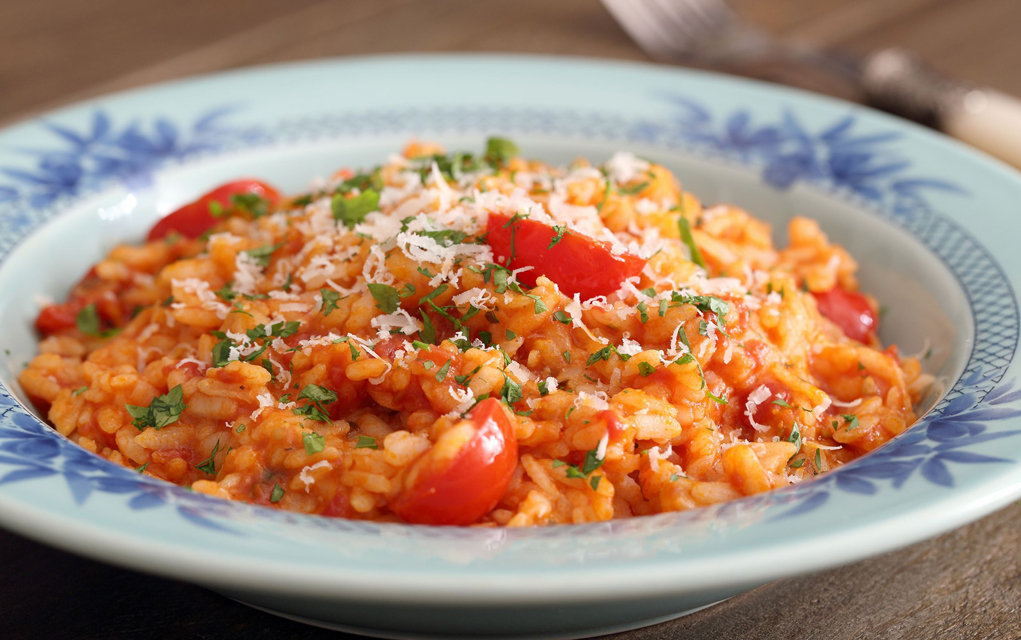
It’s almost September, which means tomatoes are turning red. All the heat in June and July did wonders for the tomato plants in my garden this year — they’re about 10 feet high, with abundant fruit.
As was the case, surely, for Boulder County farmers: We’re already seeing a variety of tomatoes on farm stands, in CSA boxes and at the Boulder County Farmers Markets (BCFM).
The good news is there’s plenty to do with all these tomatoes. Heirloom and Beefsteak tomatoes are great raw, sliced and slipped onto burgers; cherry and grape tomatoes (also great raw) are elevated when broiled with garlic and olive oil; Romas are ideal for dicing and mixing into salsas and bruschetta toppings; and low-acid Camparis are made for caprese salads (mozzarella, basil and Balsamic vinegar).
But it’s San Marzanos that get me the most excited for tomato season. Balanced, flavorful and nearly seedless, San Marzanos are prized for their role in tomato sauces. Even though you can get great quality from canned, imported San Marzanos, I planted two plants this year to taste them fresh. They’ve done well in Colorado, with one big harvest in the books and green and budding tomatoes poised to keep fruit coming through September.
You’ll also find San Marzanos at BCFM stalls this year, too. Pick deep red tomatoes that give just a little with light hand pressure. To prepare: Score an X on the bottom with a knife and boil and for 10 minutes. This will loosen the skin, so you can peel it off when cooled.
From here, I tend to go with one of two sauce preparations, which I’ll shorthand as quick and slow (though, of course, you can go hundreds of ways and you likely have a family recipe you adhere to. You do you). For the quick sauce, chop a half-inch off the tomatoes (where the stem was), macerate with a potato smasher or food processor. Finely chop some garlic and a sweet onion or shallot, heat a liberal pour of olive oil over medium heat in a sauce pan and combine. When aromatic, add in the tomato purée over the garlic and onion and let simmer for about five minutes. Add salt (and sugar, if you’d like) to taste. I’ll use the quick sauce for stuffed pastas (ravioli, manicotti) or as pizza sauce.
For the slow preparation, you’re going need more time but not much more effort — some people call this is a Sunday sauce because, well, it takes a day to make. You’ll want to brown some meat in a crock pot — I like meatballs (of ground beef, pork and veal) and hot Italian sausages, but feel free to throw in any meat that benefits from a slow braise. It’ll all taste great.
Remove the browned meat, deglaze with a cup of red wine, add a liberal pour of olive oil and sauté one or two diced yellow onions, several garlic cloves and two carrots diced. Add the skinned San Marzano tomatoes and break them up roughly with a fork until the pot gets saucy. Add back in the meat. Throw in a Parmesan rind if you have it. Add a pinch of sugar and a healthy pour of salt (you’ll add more to taste later) and let that sucker cook for up to 10 hours. Serve the meat and sauce with pasta or polenta, fresh Parmesan and a few basil sprigs.
If you can’t get your hands on San Marzanos, Romas make good sauces too, and the preparation is identical to what’s listed above.

Tomato Risotto
From Frasca/Tavernetta Chef Ian Wortham, courtesy of Boulder County Farmers Markets
• 1 cup Vialone Nano rice (arborio works too if you can’t get your hands on the good stuff)
• 1 medium onion, minced
• 1 cup white wine plus 1 tablespoon
• 1/3 cup fennel fronds, minced
• 1 medium heirloom tomato, milled
• 15 cherry tomatoes, halved
• 1 tbsp tomato vinegar
• Parmigiano-Reggiano grated
• 8.5-12.5 cups chicken stock
Sweat out the minced onion in olive oil until soft and translucent, set aside. Dry toast the rice in a medium saucepan until a nutty aroma occurs. Add the onion and white wine to the toasted rice; cook out the wine while stirring the rice. Begin to add broth to the rice while diligently stirring over medium heat, adding more broth as the rice absorbs it. Add a little salt during the cooking process, but not much to account for liquid reduction. After about 15 minutes or so the rice will be ready to “rest.” Make sure you don’t have much liquid in the pot at this time. The rice should look somewhat tacky. The grains will have some bite, and if you prefer you can cook it longer. Let the rice rest for about six minutes; after the rest, add the milled tomatoes and stir in.
Put the rice back on the heat, add the olive oil and stir to emulsify and create a creamy texture and appearance. It may need a little chicken broth to achieve this. Finish the dish with the tomato vinegar, halved cherry tomatoes, fennel and salt to taste. Serve on warmed plates with a light grating of Parmigiano-Reggiano.
Recipe courtesy BCFM and Frasca.














